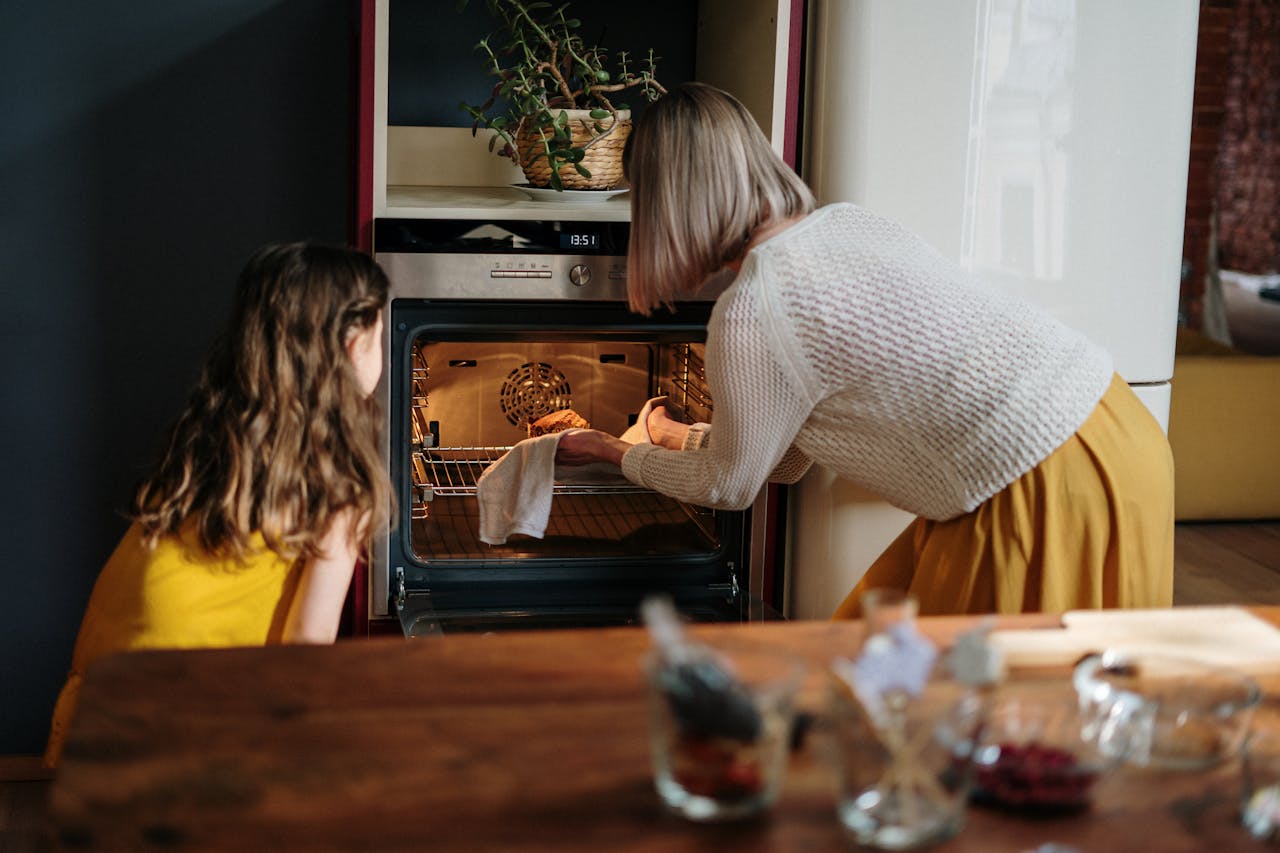
If you consider your oven only for roasting chicken or baking cookies, you’re neglecting a universe of opportunity. From accelerating weeknight meals to impressing with weekend bakes, your oven can be a kitchen powerhouse if you learn how to use it strategically. With some clever adjustments, you can unlock its full potential and make everyday cooking faster, easier, and more fun.
Whether you’re wielding a shiny new model or a tried-and-true classic like Westinghouse ovens, the trick isn’t in having the most expensive appliance it’s in having mastered the little secrets that transform an average cooking session into something extraordinary. It’s just a matter of knowing when to preheat, where to put your trays, and which settings will give you that perfect golden hue.
1. Preheat with Purpose
We’ve all done it: slipped a dish into the oven before it’s been fully preheated. Although it will save a few minutes, it can totally alter your outcomes. In baking in particular, even heat from the beginning is important. Cookies will spread too thin, and cakes will rise unevenly if you bypass this step. With roasts or casseroles, preheating allows the food to start cooking at the right temperature immediately, sealing in flavour and texture.
Use the preheating time to prep your dish, chop veggies, or set the table so you’re not just waiting around.
2. Master the Middle Rack
The middle rack is your friend for most cooking scenarios it’s where heat travels most evenly. But watch out. Changing the position of your rack can also alter the result. Positioning your tray nearer the top can be used to achieve a golden-brown crust on baked items, whereas setting it lower may be optimal to crisp the bottom of a pizza.
Heat in ovens does not travel evenly top to bottom. Knowing this will allow you to achieve restaurant-level results in your own home.
3. Harness the Power of Convection
If your oven features a convection option, don’t overlook it. Convection ovens blow hot air with a fan, so your food will cook more quickly and evenly. It’s particularly useful for roasting vegetables, baking cakes, or baking large quantities of cookies at one time.
Reduce temperature by approximately 20°C (25°F) in making the transition to convection cooking to avoid over-browning.
4. Keep an Oven Thermometer Handy
Even a good oven can be slightly “off” when it comes to temperature. A cheap oven thermometer can prevent you from having undercooked cakes or burnt roasts by letting you know the actual temperature inside. It’s worth a small investment to have more consistent results for all your cooking.
5. Don’t Be Afraid To Multi-Task
Source: Unsplash
Your oven can cook more than one thing at once ideal for parties or large family gatherings. Just be sure to provide each item with room to breathe and remember that cooking times might need to be adjusted slightly.
For instance, you can roast chicken on one level and bake potatoes on another. Just be sure to rotate trays halfway through for best cooking.
6. Learn About Residual Heat
The oven doesn’t cease cooking the moment you switch it off. Residual heat is ideal for melting cheese, toasting bread, or completing cookies without dehydrating them. This is a great way to save some power without losing output if you’re power-aware.
7. Use the Broiler for Quick Wins
The broiler is not only for toasties use it as a quick caramelising powerhouse. You can add a last bit of colour to roasted vegetables, brown the crust of casseroles, or crisp up leftover pizza in mere minutes. Just be careful things go from beautifully browned to burnt in an instant.
8. Keep It Clean for Better Performance
A grimy oven can impact cooking performance and even taste. Grease and crumbs that bake on can produce smoke, which may impart an unpleasant flavour to your food. Cleaning regularly (even wiping down after a messy bake) keeps your oven running efficiently and meals tasting excellent.
9. Invest in the Right Bakeware
Source: Unsplash
Flimsy, thin trays heat unevenly and warp when heated. Heavy-duty baking sheets and good roasting pans not only endure longer but also conduct heat evenly. Glass and ceramic dishes retain heat, making them ideal for casseroles, and metal pans are ideal for achieving a crisp crust.
10. Experiment Beyond the Usual
Your oven is capable of more than you realise, so don’t be intimidated to get creative outside the standard recipes. Slow-roast tomatoes to release a strong, rich flavour ideal for pasta sauces. You can also dehydrate fruit slices to make healthy, home-made snacks or toast nuts to provide a warm, aromatic crunch to salads and desserts. To have a treat for a fun weekend, have homemade pizza nights you preheat a baking steel or stone to get that perfect crispy base that is far better than your favourite pizzeria.
11. Get Acquainted with Your Manual
It won’t be a thrill ride, but your oven manual can unveil settings and functions you didn’t realise you had such as warming modes, bread proofing features, or preprogrammed cooking cycles. Learning about these can make life considerably simpler.
12. Practice Oven Patience
Leaving the door ajar allows heat to escape, which could take minutes off your cooking time and disrupt consistency particularly baking. Keep an eye on progress using the oven light and window instead.
Maximising your oven is all about subtle habits, not fancy methods. Cooking for one or for a party, these suggestions will assist you in achieving maximum flavour, texture, and enjoyment out of each and every meal. The more you learn about how your oven operates, the more willing you’ll be to experiment, the more bold you’ll be when cooking.
So next time you’re tempted to just “wing it,” remember: a little oven know-how can turn everyday cooking into something worth savouring.


